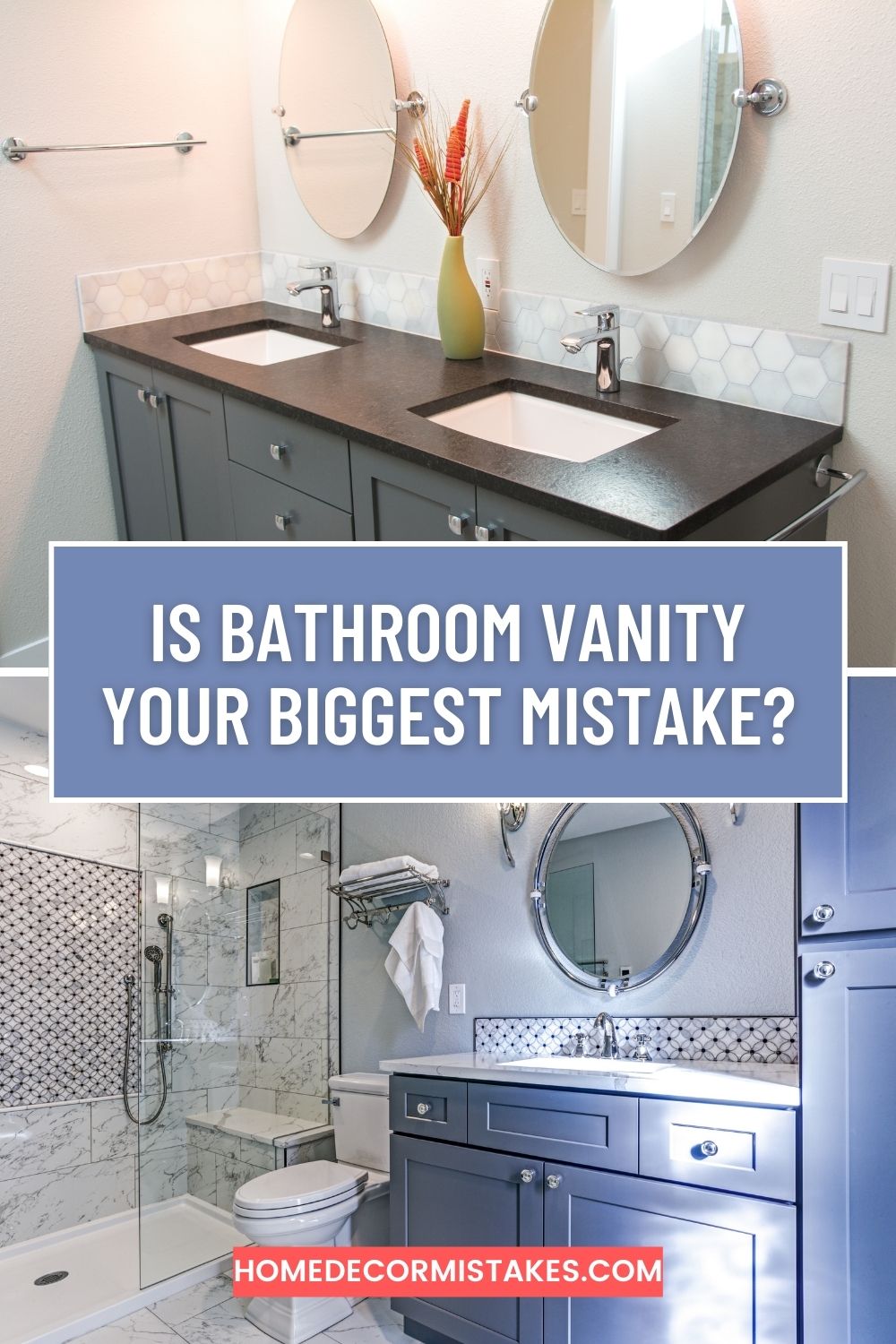Why Your Bathroom Vanity Might Be the Biggest Mistake in Your Design
The bathroom vanity is often seen as a focal point in bathroom design, a functional and aesthetic centerpiece that can either elevate or undermine the overall look of the space. However, choosing the wrong vanity can lead to a cascade of design issues, functional problems, and even long-term regrets. In this blog post, we’ll explore the common pitfalls of bathroom vanity selection and provide insights into making a choice that enhances rather than detracts from your bathroom design.
The Role of the Bathroom Vanity
Before delving into the potential mistakes, it’s important to understand the pivotal role the vanity plays in your bathroom. It serves multiple purposes:
- Aesthetic Anchor: The vanity often sets the tone for the bathroom’s design, influencing color schemes, materials, and style.
- Functional Hub: It provides essential storage and counter space, contributing to the overall usability of the bathroom.
- Focal Point: As one of the larger fixtures, it naturally draws the eye and can either harmonize with or clash against other design elements.
Given its significance, any misstep in choosing or placing a vanity can have amplified repercussions.
Common Mistakes in Bathroom Vanity Selection
1. Choosing the Wrong Size
One of the most frequent errors in vanity selection is choosing the wrong size. A vanity that is too large can overwhelm the space, making it feel cramped and cluttered. On the other hand, a vanity that is too small may not provide adequate storage or counter space, leading to functional frustrations.
Tip: Measure your bathroom meticulously and ensure the vanity you choose fits the space comfortably. Consider the scale and proportion relative to other fixtures in the room.
2. Ignoring Storage Needs
A visually appealing vanity might catch your eye, but if it lacks sufficient storage, it can quickly lead to cluttered countertops and disorganization. Think about your daily routines and the items you need close at hand, such as toiletries, towels, and cleaning supplies.
Tip: Opt for a vanity with a good balance of drawers and cabinets. Open shelving can also be a stylish and functional addition if used wisely.
3. Inadequate Counter Space
Counter space is crucial, especially in shared or family bathrooms where multiple users need to place items simultaneously. A vanity with limited counter space can hinder functionality and lead to a less efficient use of the area.
Tip: If space allows, consider a double vanity or a design with extended counter space on either side of the sink.
4. Poor Material Choices
The bathroom environment is harsh, with constant exposure to moisture, humidity, and temperature fluctuations. Choosing materials that can’t withstand these conditions can result in warping, peeling, and other forms of damage.
Tip: Select materials that are durable and moisture-resistant. Options like solid wood with a protective finish, engineered wood, or laminates are excellent choices.
5. Ignoring Plumbing Constraints
A common mistake is selecting a vanity without considering the existing plumbing layout. This can lead to costly modifications or the need to return the vanity altogether.
Tip: Always check the placement of plumbing fixtures and ensure that the vanity you choose can accommodate them without necessitating major plumbing work.
6. Overlooking Style Consistency
Your bathroom vanity should complement the overall style of your bathroom. Mixing disparate styles can lead to a disjointed look that diminishes the cohesive feel of the space.
Tip: Maintain a consistent design theme throughout your bathroom. If your bathroom has a modern aesthetic, choose a vanity with clean lines and sleek finishes. For a more traditional look, opt for a vanity with classic detailing.
7. Inadequate Lighting
Lighting is often an afterthought, but it can significantly impact the functionality and ambiance of your vanity area. Poor lighting can make daily tasks like shaving or applying makeup challenging.
Tip: Ensure adequate lighting around the vanity area. Consider a combination of overhead lights, sconces, and even under-cabinet lighting to create a well-lit, functional space.
Making the Right Choice
To avoid these common mistakes, here are some steps to guide your vanity selection process:
- Assess Your Needs: Consider who will be using the bathroom and what their storage, counter space, and functional needs are.
- Evaluate the Space: Measure your bathroom accurately and account for the placement of doors, windows, and other fixtures.
- Choose Durable Materials: Opt for materials designed to withstand the bathroom environment.
- Harmonize with the Design: Ensure that your vanity complements the overall style and color scheme of your bathroom.
- Plan for Lighting: Incorporate a thoughtful lighting plan that enhances the usability and ambiance of the vanity area.
Conclusion
Your bathroom vanity plays a crucial role in the design and functionality of your bathroom. By avoiding common mistakes such as choosing the wrong size, ignoring storage needs, and overlooking material durability, you can make a choice that enhances both the aesthetic and practical aspects of your space. With careful planning and consideration, your vanity can be a standout feature that ties your bathroom design together beautifully.

